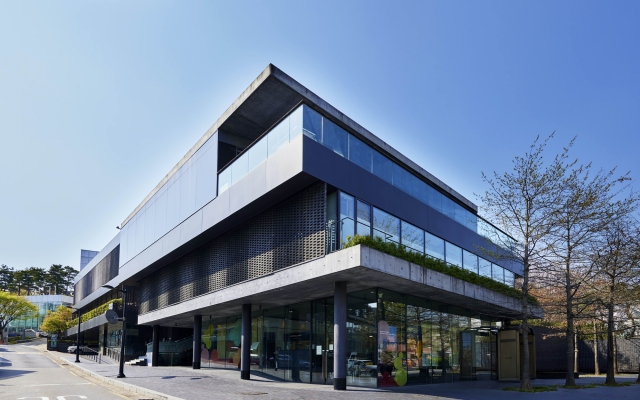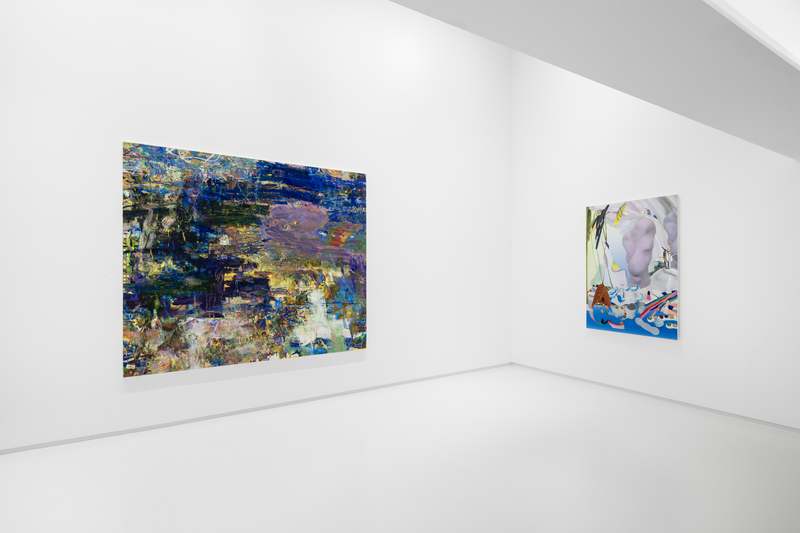
Rendering of Perrotin Dosan Park. Courtesy of KIAS (Kentaro Ishida Architects Studio), Yoki Design, and Perrotin.
The increasing number of international galleries in Seoul is one of the best indicators of South Korea’s potential in the art market. This recent art market boom has attracted numerous international galleries to the country’s capital city, including New York-based Gladstone Gallery, Berlin-based König Galerie, Austria-based Thaddaeus Ropac, Los Angeles-based Various Small Fires, Beijing-based Tang Contemporary, and Berlin-based Peres Projects.
Other galleries that have had a Seoul branch for several years have relocated and expanded to larger quarters. Lehmann Maupin and Pace, two multinational galleries that opened their Seoul branch in 2017, have both recently moved to the Hannam-dong neighborhood, where Samsung’s Leeum Museum of Art is located.

Exterior of Le Beige Building, Seoul, South Korea. Photo by Sangtae Kim. Courtesy of Pace Gallery.
Pace, which moved into the second and third floors of the Le Beige Building last year, has recently renovated the ground floor to accommodate space for experiential, immersive, and interactive artworks. Pace also announced that they will open an outdoor courtyard and tea house in September, just in time for the inaugural Frieze Seoul and Kiaf SEOUL art fairs.
Perrotin, on the other hand, announced that its second Seoul location will open in late August, before the Frieze and Kiaf art fairs, occupying 190 square meters with two floors. The new exhibition space will be the gallery’s eleventh branch, located near Dosan Park in the Gangnam District. Perrotin will be the first international gallery to operate two branches in Korea’s capital city.
Perrotin’s first Seoul space was opened in 2016 in the Samcheong-dong neighborhood near the Gyeongbok Palace. The two galleries, located in the northern and southern centers of Seoul, will connect art communities to introduce more programs and strengthen ties to the local art scene.
 Exhibition view of "Les Dernières Peintures" at Perrotin Seoul, 2022. Photo: Andy H. Jung. Courtesy of the artist and Perrotin.
Exhibition view of "Les Dernières Peintures" at Perrotin Seoul, 2022. Photo: Andy H. Jung. Courtesy of the artist and Perrotin.Alice Lung, a Seoul-based partner at Perrotin, stated to Artnet News, “Seoul is definitely the most vibrant and exciting market right now.”
“The biggest changes we see over the years are the demographics of collectors and the number of people collecting art,” she said. “Before, people were very focused on the Dansaekhwa movement of artists, but now there is an explosion of young emerging artists from all facets of life in Korea, and the new buyers are very bullish about buying these new emerging talents.” She also stated, “Art collecting is becoming a national movement.”
Perrotin represents approximately 58 emerging, established, and mid-career artists and estates, including four Korean artists: Park Seo-Bo, Lee Bae, GaHee Park, and the Chung Chang-Sup estate.
At the end of August, ahead of the opening of Frieze Seoul and Kiaf Seoul, the new Perrotin branch will debut with a solo exhibition of oil-on-linen paintings by Los Angeles-based artist Emma Webster (b. 1989).






















